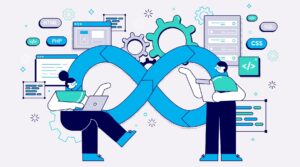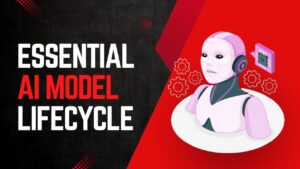In today’s fast-paced software development world, ensuring software quality is essential. Manual testing, while effective, is time-consuming and prone to human errors. This is where test automation frameworks come into play. They provide a structured approach to software testing, making it more efficient, reliable, and scalable.
A test automation framework is a set of guidelines, tools, and processes designed to help testers automate testing activities. It defines the standard practices for creating, executing, and managing automated test scripts, ensuring consistency and reusability across projects.
In this article, we will explore what a test automation framework is, its key components, different types, and real-world examples to help you understand its significance in modern software testing.
On This Page
Table of Contents
What is a Test Automation Framework?
A test automation framework is a set of rules and best practices that provide a structured approach to writing and managing test scripts efficiently.
Purpose and Benefits
A well-structured automation framework offers multiple advantages, such as:
- Increased efficiency: Reduces manual effort and speeds up the testing process.
- Better reusability: Components can be reused across multiple test cases.
- Higher accuracy: Eliminates human errors, ensuring more reliable test results.
- Improved test coverage: Allows execution of a larger number of test cases in less time.
- Easy maintenance: Organized test scripts make it easier to update and maintain tests.
Key Components of a Test Automation Framework
A robust automation framework consists of several core components that enhance its efficiency. Below is a breakdown of these components:
| Component | Description |
|---|---|
| Test Data Management | Helps organize and manage test data efficiently to ensure reliability. |
| Reusable Functions | Reusable test scripts minimize duplication and improve maintainability. |
| Logging & Reporting | Generates reports and logs for better debugging and analysis. |
| Integration with CI/CD | Ensures seamless execution of automated tests in continuous integration pipelines. |
| Exception Handling | Manages unexpected errors during test execution. |
Types of Test Automation Frameworks
Different types of automation frameworks are used based on the application under test and project requirements. Below are the six main types:
1. Linear Scripting Framework
- Also known as Record & Playback framework.
- Scripts are written in sequential order.
- Best for: Small-scale applications with minimal test cases.
- Example: Using Selenium IDE to record and execute tests.
2. Modular Testing Framework
- Breaks down test cases into independent modules.
- Modules are reusable across different test scenarios.
- Best for: Medium to large applications requiring scalability.
- Example: Testing different pages of a web application separately.
3. Data-Driven Framework
- Uses external data sources like Excel, CSV, or databases.
- Test scripts run multiple times with different sets of input data.
- Best for: Applications requiring extensive input validation.
- Example: Automating login functionality with multiple user credentials.
4. Keyword-Driven Framework
- Uses predefined keywords to drive test execution.
- Testers define keywords instead of scripting complex logic.
- Best for: Projects requiring collaboration between testers and non-technical stakeholders.
- Example: Keywords like
Login,ClickButton, andVerifyTextused in testing.
5. Hybrid Testing Framework
- A combination of data-driven and keyword-driven frameworks.
- Offers flexibility and reusability.
- Best for: Large-scale enterprise applications.
- Example: Automating e-commerce checkout flows.
6. Behavior-Driven Development (BDD) Framework
- Uses plain English language to define test cases.
- Tools like Cucumber, SpecFlow support BDD frameworks.
- Best for: Teams following Agile methodologies.
- Example: Writing test cases in Gherkin syntax:
Given I am on the login page, When I enter valid credentials, Then I should be logged in.
Popular Test Automation Frameworks & Tools
Here are some widely used automation frameworks and tools:
| Framework/Tool | Description |
|---|---|
| Selenium | Open-source framework for web automation. |
| Appium | Mobile automation framework for Android & iOS. |
| Cypress | JavaScript-based framework for modern web testing. |
| TestNG | Java-based testing framework inspired by JUnit. |
| Cucumber | BDD framework supporting Gherkin syntax. |
| Robot Framework | Python-based framework for acceptance testing. |
How to Choose the Right Test Automation Framework?
When selecting an automation framework, consider the following factors:
1. Scalability & Flexibility
- Can the framework handle an increasing number of test cases?
- Does it support multiple testing types (unit, functional, regression)?
2. Ease of Maintenance
- Are test scripts reusable and easy to update?
- Does the framework provide detailed reporting and logging?
3. Tool Compatibility
- Does it integrate with CI/CD tools like Jenkins, GitLab CI, Azure DevOps?
- Is it compatible with cloud-based testing services?
4. Learning Curve & Community Support
- Is the framework well-documented and easy to learn?
- Does it have an active user community?
5. Cost Considerations
- Is the framework open-source or requires licensing?
- What is the long-term cost of maintenance?
Real-World Use Cases of Test Automation Frameworks
1. Enterprise Applications
- Automating regression testing for banking and healthcare applications.
- Example: Using Selenium with TestNG for UI testing of banking apps.
2. Mobile App Testing
- Ensuring app compatibility across devices and OS versions.
- Example: Using Appium to test e-commerce mobile apps.
3. Continuous Integration & DevOps
- Integrating automated tests into CI/CD pipelines.
- Example: Running Cypress tests in Jenkins for rapid deployment.
WrapUP
Test automation frameworks play a vital role in software development, enabling teams to enhance test coverage, improve efficiency, and reduce manual effort. By understanding the different types of frameworks and their benefits, teams can make informed decisions on selecting the best approach for their projects.
Whether you are testing a web application, mobile app, or enterprise software, choosing the right framework can significantly impact the overall quality and reliability of your software. Investing in automation today will lead to faster releases and better user experiences in the future.
![Boost Software Quality with the Right Test Automation Framework [2025] 3 Test Automation Framework](https://cloudcusp.com/storage/2025/03/testautomationpan-1024x297.jpg)
FAQs
What is a Test Automation Framework?
A Test Automation Framework is a set of guidelines, tools, and best practices that help in writing and managing automated test scripts efficiently. It provides a structured approach to test automation, ensuring reusability and consistency.
Why is a Test Automation Framework important?
A well-structured automation framework improves test efficiency, reduces manual effort, enhances test accuracy, and allows seamless integration with CI/CD pipelines, making software testing more reliable and scalable.
What are the different types of Test Automation Frameworks?
The main types of automation frameworks include:
Linear Scripting Framework (Record & Playback)
Modular Testing Framework
Data-Driven Framework
Keyword-Driven Framework
Hybrid Testing Framework
Behavior-Driven Development (BDD) Framework
How do I choose the right Test Automation Framework?
Consider the following factors when selecting a framework:
Scalability & Flexibility
Ease of Maintenance
Tool Compatibility (with Selenium, Appium, Jenkins, etc.)
Learning Curve & Community Support
Cost Considerations (Open-source vs. Paid tools)
What are some popular Test Automation Tools?
Some widely used test automation tools include:
Selenium – Web application testing
Appium – Mobile app testing
Cypress – Modern web testing
TestNG – Java-based test framework
Cucumber – BDD testing with Gherkin syntax
Robot Framework – Python-based automation testing
Can Test Automation completely replace Manual Testing?
No. Manual testing is still essential for exploratory, usability, and ad-hoc testing. Test automation is best suited for repetitive, regression, and performance tests where speed and accuracy are crucial.
How does an Automation Framework integrate with DevOps?
Automation frameworks can be integrated into CI/CD pipelines using tools like Jenkins, GitLab CI, Azure DevOps, ensuring continuous testing and deployment in Agile and DevOps environments.
Is it necessary to have programming knowledge for Test Automation?
Yes, some level of programming knowledge is required, especially for Selenium (Java, Python, C#), Appium, and Cypress (JavaScript). However, Keyword-Driven and BDD frameworks like Cucumber allow testers with minimal coding skills to create test cases.
What are the key challenges in implementing Test Automation Frameworks?
Common challenges include:
High initial setup cost and time
Frequent maintenance of test scripts
Handling dynamic UI elements in web testing
Ensuring cross-browser and cross-platform compatibility
What are some best practices for using Test Automation Frameworks?
Choose the right framework based on project requirements.
Use modular and reusable test scripts.
Maintain proper documentation.
Integrate tests with CI/CD tools.
Regularly update test scripts to accommodate application changes.

![Boost Software Quality with the Right Test Automation Framework [2025] 1 Boost Software Quality with the Right Test Automation Framework [2025]](https://cloudcusp.com/storage/2025/03/testautomationfeatured.jpg)







